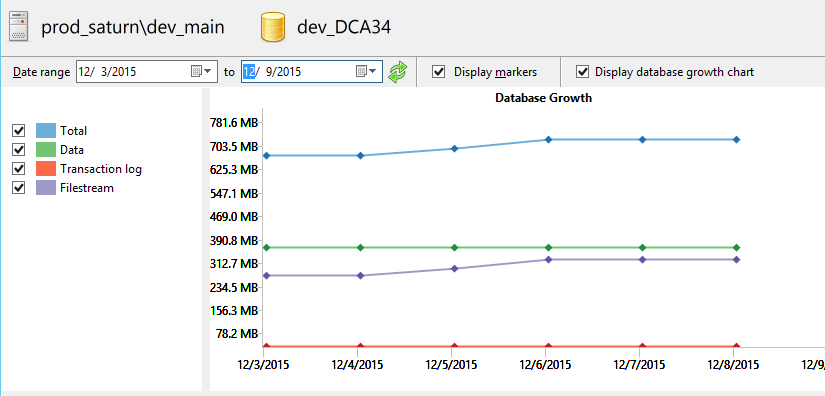
|
You can display the actual size of each data point by clicking on the marker in the chart. Values for the previous 2 and subsequent 2 data points are also displayed for comparison purposes.
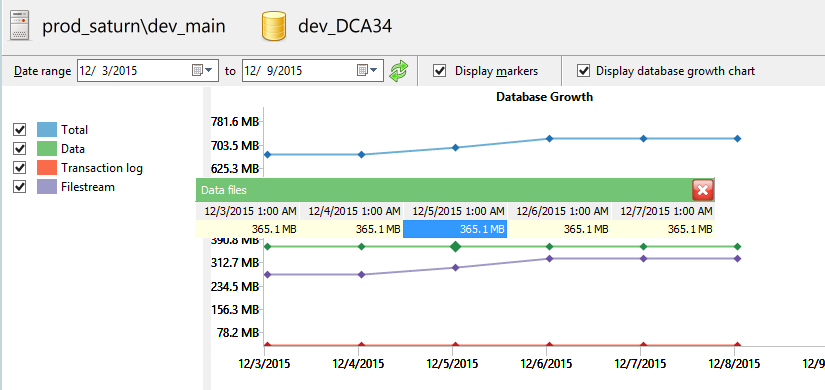
|
To hide any of the components, uncheck the corresponding component on the left pane.
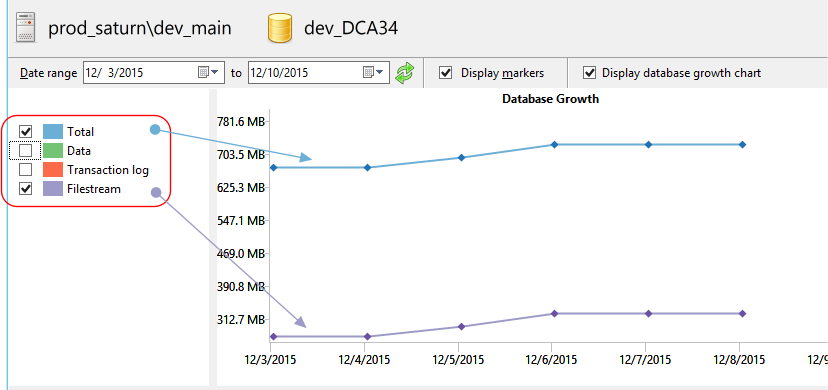
|
The bottom area of the database analysis page displays the growth trend of the individual database files and tables. Only the trend for the 5 largest database files are displayed on the chart, and only size details for the 20 largest tables are displayed.
Database files
The Database files page displays the growth trend of the largest 5 database files for the selected period. Clicking on any of the data points in the chart will display the values for that data point. The corresponding item in the details window will also be selected.

|
The details window displays the values collected for all the database components (data files, transaction logs, and filestream data) for the selected period. The left panel displays details of the selected component, including the average growth and largest growth for the selected period.

|
Tables
The Tables page displays the size of the largest 20 tables for the selected period. A trend chart is also displayed for each of the tables.
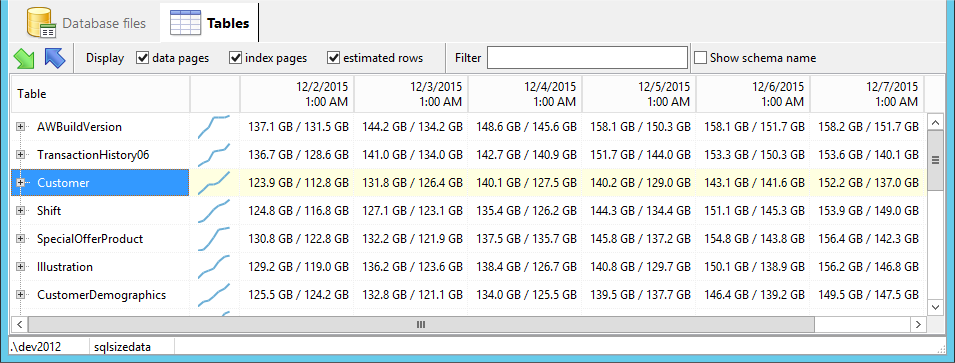
|
You can also see the breakdown between the space occupied by data pages and index pages by expanding each table's node. An estimate of the number of rows in each table is also displayed.
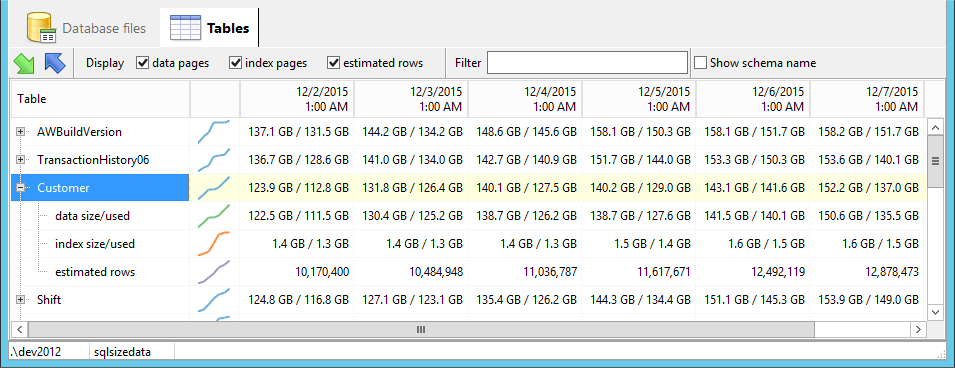
|
| |

